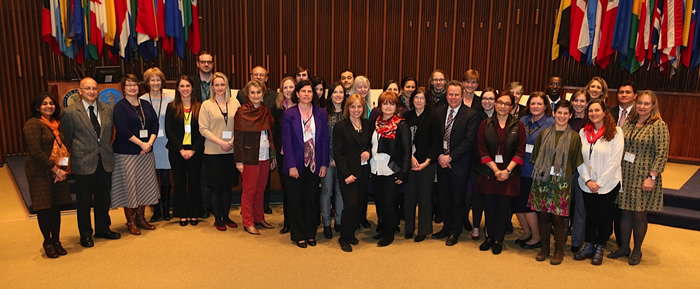The 2013 Lancet Series on Maternal and Child Nutrition provided new evidence on the importance of women’s nutrition at the time of conception and during pregnancy for the prevention of undernutrition and later-in-life non-communicable diseases. The series also identified adolescent girls as a key priority, placing them together with women of reproductive age and mothers at the center of nutrition interventions. New global estimates show that fetal growth restriction, resulting from poor in utero nutrition, including anemia and micronutrient deficiencies, is the cause of more than 200,000 neonatal deaths and 20% of stunting in children less than 5 years of age.
Despite the recognized importance of adolescent girls’ and women’s nutrition for their health and that of their children, this group is virtually neglected in most country-level nutrition programming, with the exception of provision of iron and folic acid supplements during pregnancy. Over 10 years ago, the development of a set of guiding principles for complementary feeding of the breastfed child and guiding principles for feeding non-breastfed children 6-24 months of age helped to set the stage for improved young child nutrition programming. The need for the development of a set of recommendations around key diet and eating practices for adolescent girls and women of reproductive age has also been identified, to strengthen policies and programs to improve the nutrition of these important populations.

On March 16-17, 2015, the Pan American Health Organization (PAHO/WHO), The United States Agency for International Development (USAID), SPRING, and the USAID-funded Food and Nutrition Technical Assistance III Project (FANTA), co-hosted a technical meeting of more than 40 global leaders in the field of adolescent and women’s nutrition as a first step toward developing such recommendations. These academic experts, program planners, and implementing and donor agency representatives reviewed insights and lessons learned from two discussion papers commissioned by SPRING. The first, entitled Nutrition of Adolescent Girls and Women of Reproductive Age in Low- and Middle-Income Countries: Current Context and Scientific Basis for Moving Forward, identifies key issues and practices regarding the scientific evidence. The second, entitled Review of Programmatic Responses to Adolescent and Women’s Nutritional Needs in Low and Middle Income Countries, summarizes recent and current programmatic experiences.
By the end of the meeting, held at PAHO/WHO headquarters in Washington, DC, key characteristics and issues related to diet and eating practices among adolescent girls and women had been identified. A report summarizing the outcomes and outlining the recommendations for next steps can be found below.
Meeting Report (PDF, 1.3 MB)
Speaker Biographies (PDF, 359 KB)
Materials and Presentations
Background Materials
Concept Note (PDF, 381 KB)
Minimum Dietary Diversity Indicator for Women (PDF, 528 KB)
Guiding Principles for Complementary Feeding of the Breastfed Child
Guiding Principles for Feeding Non-Breastfed Children 6-24 Months of Age
Presentations
Objectives and Outcomes (PDF, 1.1 MB)
Development of the Guiding Principles for Child Feeding (PDF, 378 KB)
WHO Evidence-Informed Guideline Development Process (PDF, 1.8 MB)
The Landscape of Nutrition of Adolescent Girls and Women (PDF, 6.2 MB)
Evidence-Based Solutions Within the Continuum of Care (PDF, 366 KB)
Programmatic Experiences and Platforms for Promoting Key Diet and Eating Practices (PDF, 304 KB)